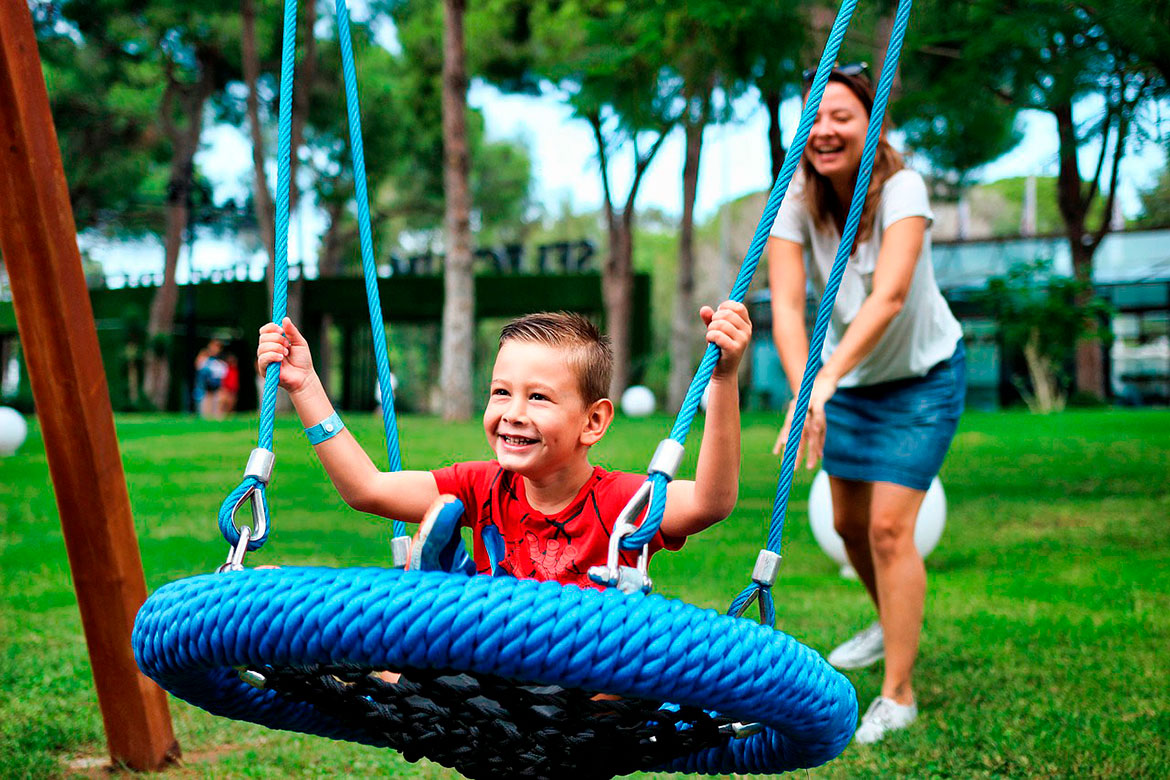How-To Playground Safety
When most people think of taking their children to the playground, danger is the furthest thing from their minds. Because playgrounds go hand in hand with childhood fun and innocence, few people look upon them as a threat to their children's safety. Unfortunately, playgrounds and playground equipment can prove deadly to unsuspecting children. In fact, there are over 205,000 injuries associated with children and playgrounds on an annual basis. To prevent children from sustaining minor and major injuries while playing at public or private playgrounds, parents, teachers, and caregivers must understand what factors can make these areas unsafe. Additionally, they must also understand how to ensure that playgrounds are a place of fun and reduce the risk of injuries.
The safety of children begins with parental supervision and rules. Parents or supervising adults should always be present while children are at play. Rules about how to conduct themselves while playing are also beneficial and children should be instructed not to push, shove, or otherwise roughhouse while on or near playground equipment. Children should also be taught the proper way to play on the equipment and what not to do, such as standing on swings or going down the slide headfirst. Taking these steps can help reduce the chances of injuries caused by falls or improper use of the equipment.
When visiting a playground, parents will want to visually inspect the equipment, and the surrounding area to ensure that it is not damaged or otherwise unsafe for children. Walk around all equipment and look for rust, sharp or jagged edges that can cut into the skin, swing chains that are open, joints that are loose, and exposed bolts. Using one's hands, check the surface of wood equipment to ensure that it is smooth and splinter-free. The simple act of touching metal equipment on hot days will alert parents to overly hot equipment and, as a result, reduce the chances of children burning themselves while they play. Children should not be allowed to play on any playground equipment that feels hot to the touch.
Playground Supervision by Adults Is a Necessity
- Parents must be attentive and aware of what their children are doing at all times. Even a second of inattention can be dangerous and result in injury.
- Inspect the playground thoroughly before children come to play. Check the premises to make sure it is suitable for children and report any hazards that are found.
- Adults and children alike should dress properly, which means not wearing clothing that can catch on objects, become entangled, or increase the risk of strangulation. These include helmets, purses, scarves, necklaces, and garments with drawstrings.
Choose a Playground That's Appropriate for Your Child
- Kids older than five years can unintentionally run over or seriously hurt smaller children. Bigger children should play in their own area, away from smaller ones.
- Playgrounds for toddlers should have smooth surfaces that are suitable for walking or crawling.
- Children should not be allowed to use swings until they are at least 9 months old, or until they can sit upright. At this time bucket swings are the safest option for them to use.
Choose Safe Playground Surfaces
- Adults should avoid allowing children to play on hard surfaces like concrete and asphalt, grass, gravel, or dirt.
- Surfaces that absorb impacts are preferable areas for children to play. Examples include sand, wood chips, mulch, and rubber mats.
- Soft surfaces should extend at least six feet in all directions beyond the edge of playground equipment.
- Playground surfacing should extend to twice as far out as the swing sets are high. If swing sets that are 10 feet high then the surfacing should extend 20 feet beyond.
Ensure That Qualified Staff Keeps Playgrounds Properly Maintained
- Check with the day care center, school or other property owners to ensure that they have equipment that is maintained and appropriate for the various ages of the children who are playing in the area.
- If there are any potential dangers present, do not allow children to play there until the proper steps have been taken to repair or replace the equipment.
- If home playground equipment is damaged or poorly maintained, alert the parents to the problem, and like the public equipment, do not allow children to play until repairs have been made.
Playgrounds are a great way for kids to expend extra energy, get the exercise that they need, and have fun with their friends. They may also, however, be the cause of unintentional injuries. Even home playgrounds can be dangerous if they are not set up or maintained properly. To prevent a day at the playground from turning into a trip to the emergency room, parents will want to do whatever it takes to keep their children safe. Often this is a matter of being attentive and aware of the condition of the equipment.
For more information about playground safety, please review the following list of links:
- Healthy Children: Playground Safety
- Playgrounds and Toxic Threats
- Playground Safety Checklist
- S.A.F.E. Factors and Safety Video
- For Parents: Playground Safety
- Playground Safety
- NRPA Guides Playground Safety Video
- Playground Injuries Fact Sheet
- Safety Info: Playground Safety
- American Academy of Orthopedic Surgeons: Playground Safety Guide
- Parents Playground Injury Prevention Checklist (PDF)
- Playground Safety Tips for Pre-School Children
- Playground Safety: Fun Without the Injuries
- Playground Safety and Injury Prevention Tips
- Public Playground Safety Handbook (PDF)
- Home and Leisure Safety: Playgrounds
- Playground Safety Starts at Home
- Playground Safety Article
- Healthy Children: Safety on the Playground
- Caring for Kids: Playground Safety
- Playground Safety Guidelines
Find more about the author: Kim Hart

